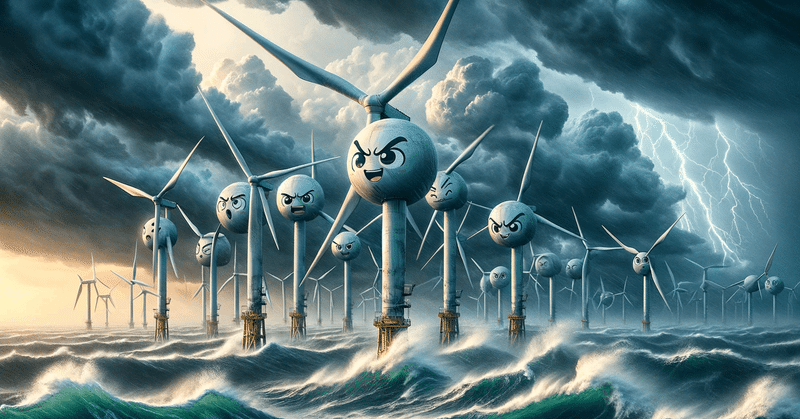
洋上に浮かぶ孤独の戦士、立ち向かうのは地球温暖化? 気ままなリライト125
Guided by a disputable hypothesis that human-induced carbon emissions are a main cause of global warming, with a firm belief in wind power’s role in the fight against the so-called man-made global warming, the Japanese government has set its sights on harnessing the potential of offshore wind energy within its exclusive economic zone (EEZ). This government's decarbonization efforts are aimed at leveraging the marine environment for energy generation, while simultaneously keeping the marine development for energy generation environment-friendly, preserving marine biodiversity and preventing marine pollution. Ambitious goals are set to achieve a generation capacity of 1,000 megawatts by 2030, with plans to expand this capacity to between 3,000 and 4,500 megawatts by 2040. This expansion will see offshore wind farms stretching across the EEZ, far beyond the nation's coastal waters, marking a ten-fold increase in the target area from approximately 0.43 to 4.47 million square kilometers.
The government's drive to expand offshore wind energy capacity beyond its coastal waters has been highlighted by the upcoming amendment of the 2019 Act, aimed at promoting the use of sea areas for marine renewable energy generation. This forthcoming amendment, earmarked for discussion in the current Diet session, seeks to refine the foundational regulations governing the utilization of maritime spaces for renewable energy projects, including offshore wind. Currently, the act allows for a single public tender process, where the successful bidder leases government-allocated sea zones within territorial waters for a 30-year period, provided that the government's regulatory body ensures the local community participation and the resultant benefits of the project. The updated amendment aims to enhance the allocation process for offshore wind projects extending beyond territorial seas, introducing a two-phase selection system inspired by models in the US and Australia, thus enabling more efficient management and distribution of offshore wind contracts by the government.
The two-tiered selection system is also designed to motivate bidders to plan projects that are not only financially viable but also socially and environmentally responsible. In the initial phase, bidders undergo a comprehensive evaluation, which includes assessing their renewable energy potential in offshore areas, analyzing the proposed electricity pricing, examining technical capabilities for grid integration, reviewing financial robustness. Those who meet those criteria receive preliminary approval, advancing to the next phase. The focus in the second phase shifts towards local community engagement and their benefits. Bidders are encouraged to actively collaborate with local communities and municipalities during the planning process, with the goal of promoting local economic development while minimizing the impact on the local ecosystem, addressing potential adverse effects on the fishing industry and marine life, and improving energy security. This process concludes with the government's regulatory body selecting the proposal that offers the best combination of cost efficiency and environmental consideration, granting final approval to the project that best aligns with those holistic objectives.
Tackling the urgent challenge of global warming introduces a paradox when Japan ventures into an ambitious experiment to discern whether the deployment of extensive offshore wind power farms could offer a path to energy security, albeit at the risk of altering the regional climate. The adage "Many drops make a shower " captures the essence of this experiment, underscoring the cumulative impact of small movements. The phenomenon in question, known as the wind wake effect, has a relatively minor impact offshore when compared with the natural forces that shape global wind patterns and ocean currents. This effect occurs when wind turbines, by extracting energy from the wind, reduce the wind's speed downstream, thereby influencing the local climate. This includes variations in temperature and humidity in areas surrounding those offshore wind power farms. Furthermore, the introduction of large-scale wind farms could subtly alter the heat exchange between the atmosphere and the ocean, potentially affecting local ocean currents on a minimal scale. Despite the modest scale of those impacts, they could be viewed with the same threat as global climate change by those who interpret a gradual increase of a few degrees Celsius in the atmospheric temperature over the last century as a sign of global warming, driven by a frenzy of concern for the planet's future.
この記事が気に入ったらサポートをしてみませんか?
